Intel 9th Gen Core Processors All the Desktop and Mobile 45W CPUs Announced AnandTech
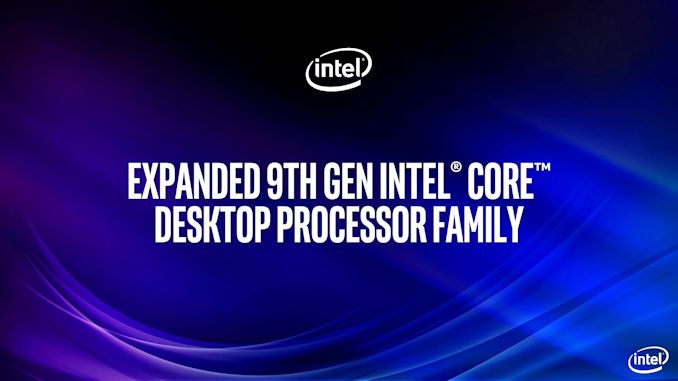
How Intel has launched its range of ninth technology processors has been an bizarre and awkward one. Despite the release of the 8-middle 9900K closing 12 months, we nonetheless haven’t had all of the lower stop processors within the family clearly be introduced, in spite of several leaks inside the interim. That all changes today because the organization is giving out a complete list of processors, with availability quickly to follow. There are nevertheless question marks about Intel’s ability to fulfill the brand new multiplied demand, so it will be interesting to peer if Intel can nonetheless offer the lower frequency and decrease center remember hardware in volume.
Today’s launch is available in two parts: Desktop and Mobile. Desktop is on this web page, Mobile is on the next page.
Intel 9th Generation Core Desktop Processors: 34 CPUs
Dubbed ‘Coffee Lake Refresh’, the 9th generation of Intel’s Core CPU product line is a direct refresh of its eighth technology Coffee Lake hardware, with minor upgrades inclusive of a higher thermal interface on the high end processors, support for up to eight cores, and newer chipsets with integrated USB 3.1 Gen2 (10Gbps) and CNVi-enabled Wi-Fi. The hardware is still basically the authentic 6th Gen Skylake microarchitecture beneath, from2019, but constructed on Intel’s modern 14nm method version, that allows you to extract extra frequency and efficiency, and with more cores on the high-quit.
Intel sub-divides its CPUs in two ways. First, with the aid of the Core i-series variety:
- Core i9: Eight cores, 9900 with HT, 9700 with out HT
- Core i7: Eight cores, no HT
- Core i5: Six Cores, no HT
- Core i3: Four Cores, no HT
- Pentium Gold: Two Cores, HT
- Celeron: Two Cores, no HT
Then, each processor might also have a further suffix associated with certain capabilities that are enabled or disabled:
- K = Overclockable
- KF = Overclockable with No Integrated Graphics
- No Suffix = Standard CPU, 54-65W TDP, Integrated Graphics
- F = No Integrated Graphics
- T = Low Power, 35W TDP
The idea here is that the call of the processor ought to inform you all that you need to realize about what the processor has available. Aside from the peculiar distinction inside the Core i9 phase, it’s generally all there.
New for the 9th technology CPUs is the F suffix, meaning no incorporated snap shots. We’ve commented on these elements earlier than, but ultimately it would appear that Intel’s production capability to yield cores is higher than its ability to yield images at the appropriate frequencies, so in order to maximize $ in line with rectangular millimeter, it's miles now supplying graphics-unfastened versions of its famous CPUs. These elements are priced the identical without or with photographs, which simply goes to expose you ways an awful lot Intel values its current pics implementation. As continually, it will be exciting to look how lots Intel can yield among F variations and ordinary processors.
Regarding everyday processors and the lower strength 35W TDP ‘T’ processors, the primary variant right here is inside the base frequency. It ought to be referred to that Intel’s TDP rankings are only valid at the base frequency of the processor, so even if the CPU has a high faster, its peak power consumption for the duration of rapid can be loads higher than the TDP fee (Intel defines a Power Limit 2 cost that is regularly 25% higher, however motherboard manufacturers normally forget about this). This is an attribute given solely with the aid of Intel CPUs, exacerbated by means of the motherboard producers going past specs, and we’ve specific the problem in preceding articles. Click the observe link to discover greater:
//www.anandtech.com/show/13544/why-intel-processors-draw-greater-energy-than-expected-tdp-turbo
Each CPU has a certified reminiscence assist of DDR4-2666 for Core i5 and above, or DDR4-2400 for Core i3 and under. This method that even as processors can also guide higher, Intel does not make any assurances as to whether or not it's going to work. All the processors are aligned with Intel’s Optane H10 garage answer, which turned into announced the day past. Support with H10 is sort of arbitrary, as H10 has to work with different CPUs as well.
We’re going to undergo every of the sub-divisions, optimistically making the naming and numbering clearer.
| Intel ninth Generation Core CPUs Core i9 | |||||||||
| AnandTech | Cores Threads | Base Freq | Turbo Freq | L3 Cache | DDR4 | IGP | TDP | Price (1ku) | |
| i9-9900 | K | 8C / 16T | 3.6 GHz | 5.0 GHz | 16 MB | 2666 | Y | 95 W | $488 |
| i9-9900 | KF | 8C / 16T | 3.6 GHz | 5.0 GHz | 16 MB | 2666 | 95 W | $488 | |
| i9-9900 | 8C / 16T | 3.1 GHz | 4.9 / 5.0* | 16 MB | 2666 | Y | 65 W | $439 | |
| i9-9900 | T | 8C / 16T | 2.1 GHz | 4.4 GHz | 16 MB | 2666 | Y | 35 W | $439 |
| i9-9700 | K | 8C / 8T | 3.6 GHz | 4.9 GHz | 12 MB | 2666 | Y | 95 W | $374 |
| i9-9700 | KF | 8C / 8T | 3.6 GHz | 4.9 GHz | 12 MB | 2666 | 95 W | $374 | |
| * i9-9900 helps Intel Thermal Velocity Boost for +100 MHz Turbo |
There are two important numbers in the Core i9 phase, the 9900 own family with HyperThreading, and the 9700 circle of relatives without. Both the i9-9900K and i9-9700K have corresponding F variations without included images, as well as 35W ‘T’ versions which have lots lower base frequencies.
Interestingly, Intel’s legitimate documentation lists the Core i9-9900 as a 4.9 GHz processor, or 5.0 GHz while ‘Intel Thermal Velocity Boost’ is enabled and legitimate. If you’re thinking what Intel Thermal Velocity Boost is, so had been we – Intel has in no way particularly cited it in any previous meeting or briefing, and it unexpectedly appears in a processor list slide. The slide certainly lists the faster as 5.0 GHz*, with the asterisk leading to a footnote which clarifies that it's far 5.0 GHz when ITVB is enabled. It’s very sneaky how they’ve achieved that, and smooth to overlook in case you are simply skimming the spec sheet. Also doubling down on the awkwardness, the Core i9-9900 is the only processor inside the entire stack that has this feature. Why just this one? I can guess the PR answer, however the real answer? Is Intel just trialling a function? How is this feature going to be interpreted with the aid of the motherboard producers? Are they going to butcher this one as well? Intel just opened a can of very particular worms that it pulled from a box it didn’t inform us about.
| Intel ninth Generation Core CPUs Core i7 | |||||||||
| AnandTech | Cores Threads | Base Freq | Turbo Freq | L3 Cache | DDR4 | IGP | TDP | Price (1ku) | |
| i7-9700 | 8C / 8T | 3.0 GHz | 4.7 GHz | 12 MB | 2666 | Y | 65 W | $323 | |
| i7-9700 | F | 8C / 8T | 3.0 GHz | 4.7 GHz | 12 MB | 2666 | 65 W | $323 | |
| i7-9700 | T | 8C / 8T | 2.0 GHz | 4.3 GHz | 12 MB | 2666 | Y | 35 W | $323 |
Moving onto the Core i7 parts, and we straight away have a problem. Here Intel has listed three Core i7-9700 CPUs. But wait, didn’t we have i9-9700 elements with the Core i9 own family? Yes, we did. Intel has decided (or instead, someone at Intel desires to confuse anybody) that the 9700K processors should be Core i9, while the non-K elements ought to be Core i7. The differences among the i9 and i7 variations are simply frequency and TDP, even as we still have 8 cores with out HT, and I can absolutely apprehend the preference to have a awesome separation between the 2, however this is ultimately a shot at each obfuscation and confusion for companions, OEMs, customers, and followers of Intel’s product line. Perhaps to make subjects even worse, we've got Core i9-K. We don’t have Core i7-K. We have Core i5-K, and Core i3-K. It makes me marvel if this naming and segmentation approach is ever passed via a focus organization past subsets of engineers or advertising.
| Intel ninth Generation Core CPUs Core i5 | |||||||||
| AnandTech | Cores Threads | Base Freq | Turbo Freq | L3 Cache | DDR4 | IGP | TDP | Price (1ku) | |
| i5-9600 | K | 6C / 6T | 3.7 GHz | 4.6 GHz | 9 MB | 2666 | Y | 65 W | $262 |
| i5-9600 | KF | 6C / 6T | 3.7 GHz | 4.6 GHz | 9 MB | 2666 | 65 W | $262 | |
| i5-9600 | 6C / 6T | 3.1 GHz | 4.6 GHz | 9 MB | 2666 | Y | 65 W | $213 | |
| i5-9600 | T | 6C / 6T | 2.3 GHz | 3.9 GHz | 9 MB | 2666 | Y | 35 W | $213 |
| i5-9500 | 6C / 6T | 3.0 GHz | 4.4 GHz | 9 MB | 2666 | Y | 65 W | $192 | |
| i5-9500 | F | 6C / 6T | 3.0 GHz | 4.4 GHz | 9 MB | 2666 | 65 W | $192 | |
| i5-9500 | T | 6C / 6T | 2.2 GHz | 3.7 GHz | 9 MB | 2666 | Y | 35 W | $192 |
| i5-9400 | 6C / 6T | 2.9 GHz | 4.1 GHz | 9 MB | 2666 | Y | 65 W | $182 | |
| i5-9400 | F | 6C / 6T | 2.9 GHz | 4.1 GHz | 9 MB | 2666 | 65 W | $182 | |
| i5-9400 | T | 6C / 6T | 1.8 GHz | 3.4 GHz | 9 MB | 2666 | Y | 35 W | $182 |
The Core i5 variety is surprisingly traditional, featuring the 9600, 9500, and 9400 elements with a few versions. The 9600 gets a K, a KF, and a T, whereas the 9500/9400 gets an F and a T only. Interestingly, the K components right here are the handiest overclockable contributors on the stack which have a TDP of 65W, in comparison to 91W or 95W. These components provide accelerated base frequency (3.7 GHz vs 3.1 GHz), despite the fact that have a tray pricing (1k unit purchase) of $49 higher than the non-overclockable elements.
| Intel ninth Generation Core CPUs Core i3 | |||||||||
| AnandTech | Cores Threads | Base Freq | Turbo Freq | L3 Cache | DDR4 | IGP | TDP | Price (1ku) | |
| i3-9350 | KF | 4C / 4T | 4.0 GHz | 4.6 GHz | 8 MB | 2400 | 91 W | $173 | |
| i3-9320 | 4C / 4T | 3.7 GHz | 4.4 GHz | 8 MB | 2400 | Y | 62 W | $154 | |
| i3-9300 | 4C / 4T | 3.7 GHz | 4.3 GHz | 8 MB | 2400 | Y | 62 W | $143 | |
| i3-9300 | T | 4C / 4T | 3.2 GHz | 3.8 GHz | 8 MB | 2400 | Y | 35 W | $143 |
| i3-9100 | 4C / 4T | 3.6 GHz | 4.2 GHz | 6 MB | 2400 | Y | 65 W | $122 | |
| i3-9100 | F | 4C / 4T | 3.6 GHz | 4.2 GHz | 6 MB | 2400 | 65 W | $122 | |
| i3-9100 | T | 4C / 4T | 3.1 GHz | 3.7 GHz | 6 MB | 2400 | Y | 35 W | $122 |
The Core i3 additionally follows its traditional scheme, with the 9350, 9320, 9300, and 9100 parts, the latter having barely decrease L3 cache according to core and are priced as a result. The 9350 is available as a K or a KF, however no popular SKU: as a substitute, users can have the 9320. Only the 9300 and 9100 get low power T versions, and pricing inside the Core i3 line is solid as compared to the preceding era. It ought to be stated that the Core i3 components (and underneath) best have qualified assist as much as DDR4-2400, rather than DDR4-2666 supported by means of the Core i5/i7/i9 processors.
I need to factor out that Intel continues to be now not providing a quad-center for below $100 to compete with AMD’s Ryzen 3 2200G. The APU from AMD has four complete Zen cores at the side of Vega images, dismantling any images workload in comparison to Intel’s supplying, and it comes bundled with an awesome 65W cooler, while it’s a question mark now and again if Intel’s CPUs come with a cooler (on the way to meet tray pricing, in all likelihood now not). Intel’s most inexpensive quad-core is the i3-9100, that is possibly to offer higher unmarried threaded performance, but would be 30% extra steeply-priced at retail. If you can discover one, this is – there are 2200G components to be had nearly everywhere.
| Intel ninth Generation Core CPUs Pentium Gold and Celeron | |||||||||
| AnandTech | Cores Threads | Base Freq | Turbo Freq | L3 Cache | DDR4 | IGP | TDP | Price (1ku) | |
| G5620 | 2C / 4T | 4.0 GHz | - | 4 MB | 2400 | Y | 54 W | $86 | |
| G5600 | T | 2C / 4T | 3.3 GHz | - | 4 MB | 2400 | Y | 35 W | $75 |
| G5420 | 2C / 4T | 3.8 GHz | - | 4 MB | 2400 | Y | 54W 58W | $64 | |
| G5420 | T | 2C / 4T | 3.2 GHz | - | 4 MB | 2400 | Y | 35 W | $64 |
| G4950 | 2C / 2T | 3.3 GHz | - | 2 MB | 2400 | Y | 54 W | $52 | |
| G4930 | 2C / 2T | 3.2 GHz | - | 2 MB | 2400 | Y | 54 W | $42 | |
| G4930 | T | 2C / 2T | 3.0 GHz | - | 2 MB | 2400 | Y | 35 W | $42 |
| * G5420 can be derived from twin die (54W) or quad die (58W), see below |
The Pentium Gold/Celeron parts bring up the inexpensive give up of the spectrum, from $42 as much as $86. They are all twin cores, with the Pentium Gold CPUs helping HyperThreading. The Celeron parts additionally have the smallest quantity of L3 cache consistent with center, with best 1 MB. The abnormal CPU from the bunch is the Pentium Gold G5420, which is available in 54W and 58W editions. Intel has performed this earlier than: one model of this CPU is derived from a dual center die (54W), even as the alternative is a cut down quad-core variant (58W). In the past these two different fashions have had exceptional part numbers, so customers might be capable of tune which one they get. If there isn’t a part range indexed at the retailer, then it’s a pot good fortune primarily based on Intel’s binning and what they have got in stock.
For those processors, users will must pair them with a 300-series chipset. There is no new 300-collection chipset launch these days, so users can rely on the Z390/Z370/Q370/B360/H350/H310 models already inside the market. Depending at the version chosen, they may have some of PCIe lanes available, a number of SATA ports, a number of USB ports, and doubtlessly some incorporated Wi-Fi as properly. It is as much as the board producers to assist these functions, or use corresponding controllers. It must be cited that with a firmware improve for the newest processors, maximum motherboards ought to start helping Samsung’s new 32 GB memory modules, taking into consideration a total 128 GB of memory assist on these CPUs (two DIMMs according to channel, two channels).
Intel hasn’t reached out to us approximately reviewing any of those new processors, so when you have any mind of what components you want to peer examined, please let us realize.
Over the web page is our coverage of Intel's new Mobile processors, up to five.0 GHz*.
The 45W range of processors from Intel fits into the excessive-overall performance / prosumer niche of portable gaming laptops and workstations. These normally populate the 15.6-inch and 17.3-inch gadgets, going from a fundamental gaming device with a discrete graphics card all of the manner as much as DTR, or DeskTop Replacement hardware, that takes the place of a full on computing device in a (insert non-committal gesture) cellular form of form thing that weighs nearly double digits in kilos.
Intel has lately launched a few mobile processors into the marketplace, inclusive of Whiskey Lake at 15W on 8th Gen, however that is the first right day trip for high overall performance 9th Gen in a mobile form component. At this point, we’re no longer seeing a alternative for Kaby Lake-G, wherein Intel paired a H-series CPU with a Radeon GPU inside the equal package, so it will likely be exciting to look if that gets a refresh later this yr.
| Intel ninth Generation Core CPUs Mobile 45W H-Series | ||||||||
| AnandTech | Cores Threads | Base Freq | Turbo Freq | L3 Cache | DDR4 | OC | TDP | |
| i9-9980 | HK | 8C / 16T | 2.4 GHz | 4.9 GHz* | 16 MB | 2666 | Y | 45 W |
| i9-9980 | H | 8C / 16T | 2.3 GHz | 4.7 GHz* | 16 MB | 2666 | 45 W | |
| i7-9850 | H | 6C / 12T | 2.6 GHz | 4.6 GHz | 12 MB | 2666 | ish | 45 W |
| i7-9750 | H | 6C / 12T | 2.6 GHz | 4.5 GHz | 12 MB | 2666 | 45 W | |
| i5-9400 | H | 4C / 8T | 2.5 GHz | 4.3 GHz | 8 MB | 2666 | 45 W | |
| i5-9300 | H | 4C / 8T | 2.4 GHz | 4.1 GHz | 8 MB | 2666 | 45 W | |
| * i9 CPUs guide Intel Thermal Velocity Boost for +100 MHz Turbo |
Enter the Musclebook: Intel is introducing the brand new ‘Musclebook’ name for the DTR equal devices. Ultimately these are probably to be paired with the high give up Core i9 processors. Intel has two components right here, the 9980HK which allows for overclocking, and the 9980H. The 9980H equal is new to this processor stack, based totally on requests from Intel’s companions that they desired something ‘as rapid’ because the top HK model, however not honestly overclockable – it turns out that if you stick a HK in a system, customers anticipate a good way to push it, and OEMs wanted equivalent overall performance while not having to construct in aid for overclocking.
Both the 9980HK and 9980H supports Intel’s Thermal Velocity Boost, giving a further 100 MHz if the thermal performance of the hardware allows it. Again, Intel doesn’t specify what requirements those are, of if producers can ignore them, or if it’s enabled by using default etc. It will be particularly deceptive to encompass the ones values into the single middle rapid frequencies, however with cellular platforms we’ve seen this sort of huge range in PL2 values set in hardware due to the form component, there are a extensive variety of unmarried core turbo frequencies that don’t in shape as much as the SKU list anyway – this is OEM and design dependent, so there isn’t plenty fuss from us on this.
There are two Core i7 parts, with six cores and hyperthreading, and the Core i7-9750H supports ‘Partial Overclocking’. In Intel terminology, because of this the CPU can be up to 400 MHz better if the OEM sets it as such, permitting the CPU to turbo up to 5.0 GHz. That will be extremely tool established, and given the manner that most OEMs supply their specification sheets, it'll be interesting to peer if any of them virtually list if that is the case, or simply take the 4.6 GHz and no longer tell every person.
The two Core i3 components bring up the rear, with four cores and hyperthreading. This method Intel still makes quad cores with hyperthreading, even though they've disappeared from the computing device product line.
Given the tight integration of cellular chipsets into the goods, expect to look a few new devices enabled with Intel’s new AX200 Wi-Fi 6 card that became launched remaining week. The mobile chipsets also are listed as helping Samsung’s new 32 GB reminiscence modules, so we can likely see some excessive-quit ‘Musclebooks’/DTR replacements the usage of those, at intense fee to the person. Intel is again declaring Optane garage guide on those gadgets, in addition to TB3 guide when additional controllers are protected.
With the annual Computex exchange display across the nook (last week of May), we’re expecting to look a smorgasbord of gadgets being provided with the new H-collection components: each refreshes of old fashions and perhaps a few new ones in the blend. Stay tuned for our insurance from the display.
Let's block commercials! (Why?)
//www.anandtech.com/show/14256/intel-ninth-gen-core-processors-all-the-desktop-and-cellular-45w-cpus-announced
2019-04-23 13:40:24Z
52780275427516
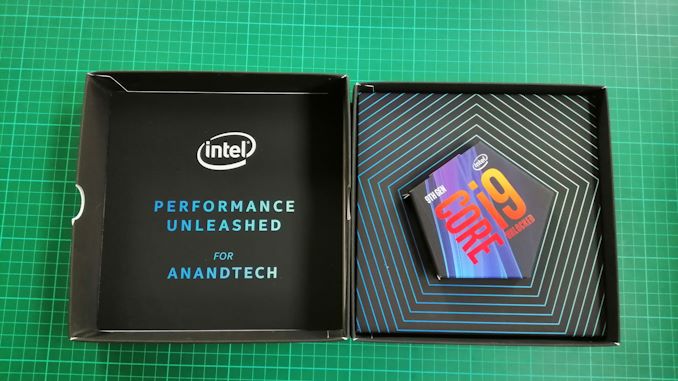
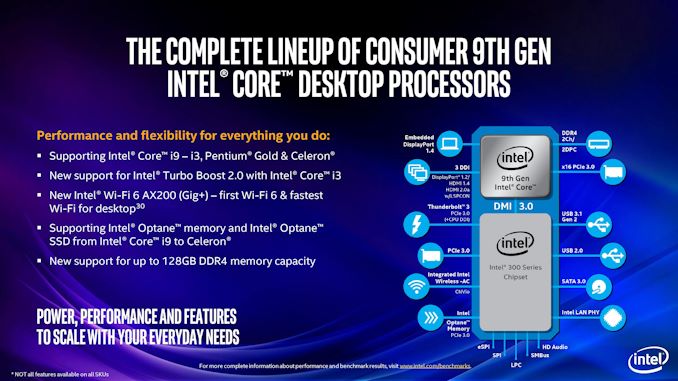
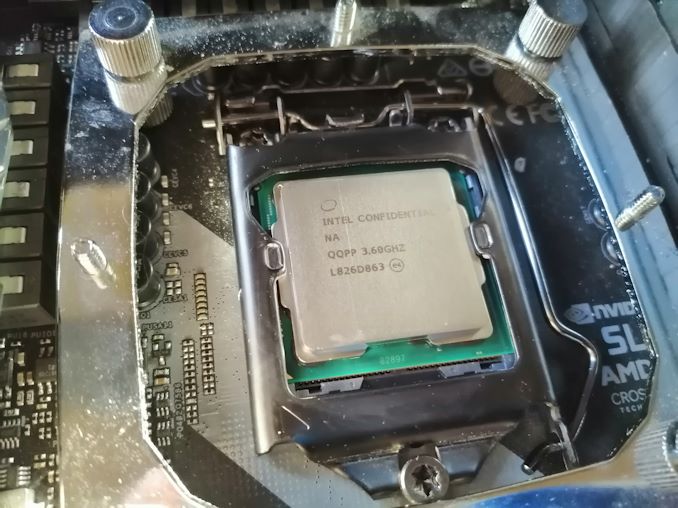
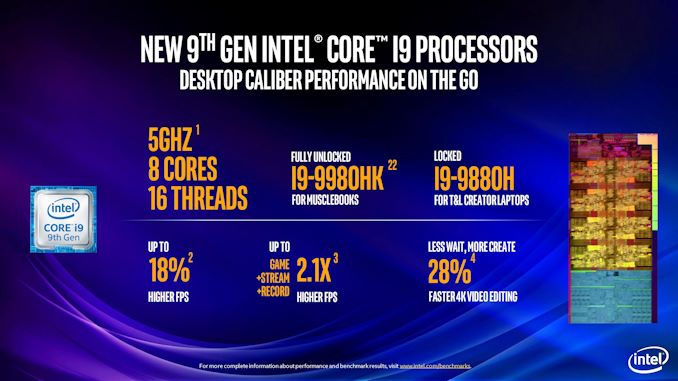
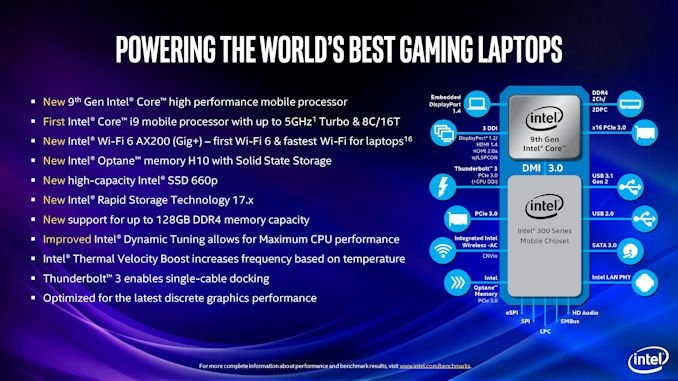
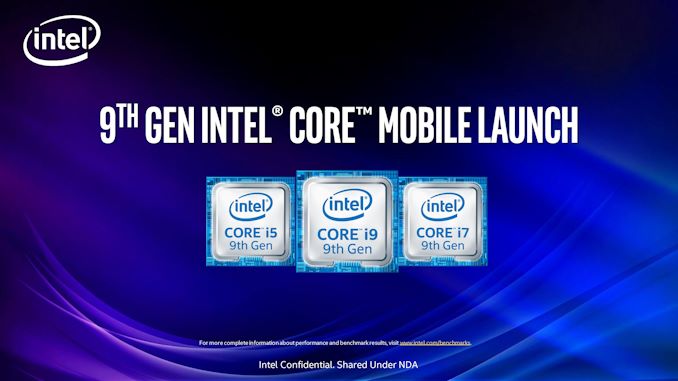
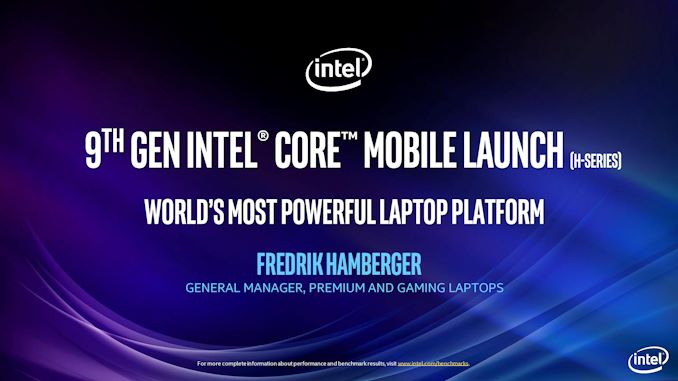
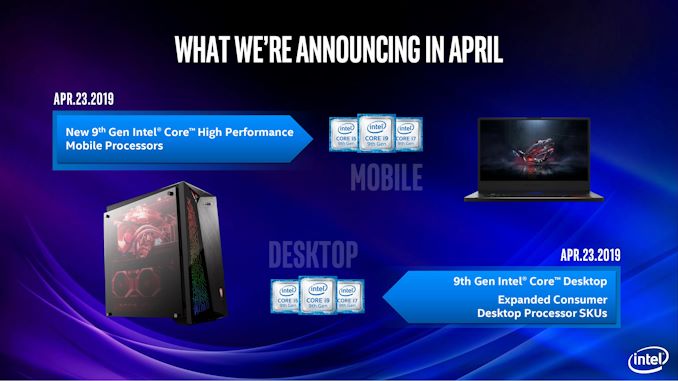
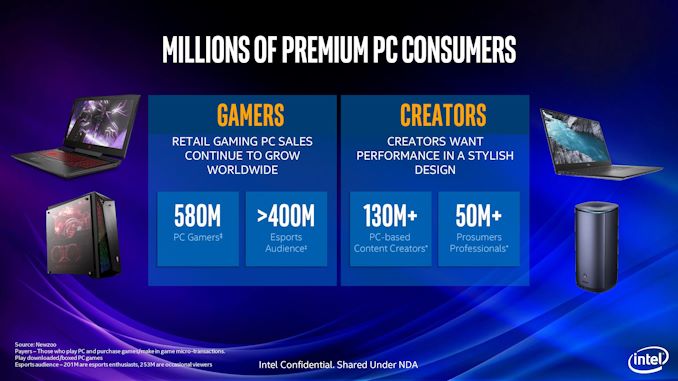
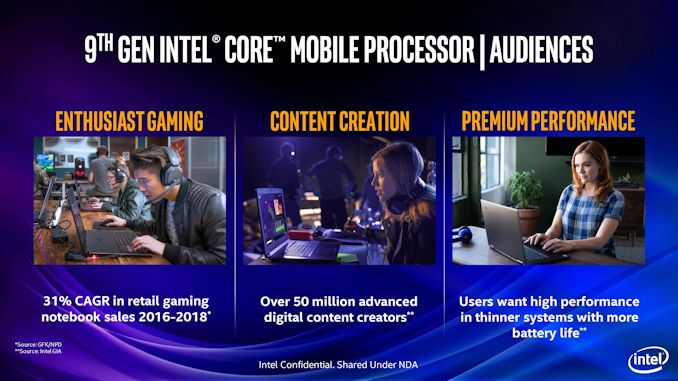
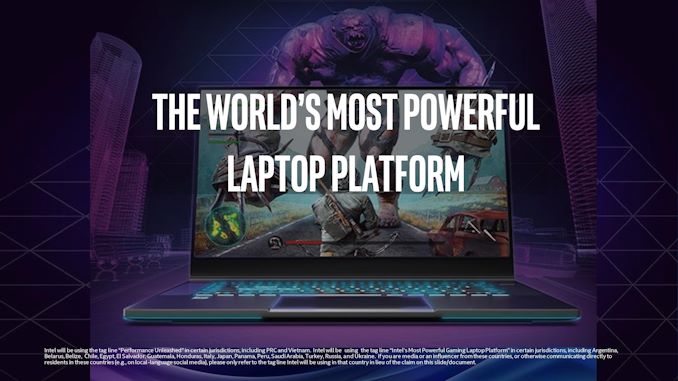
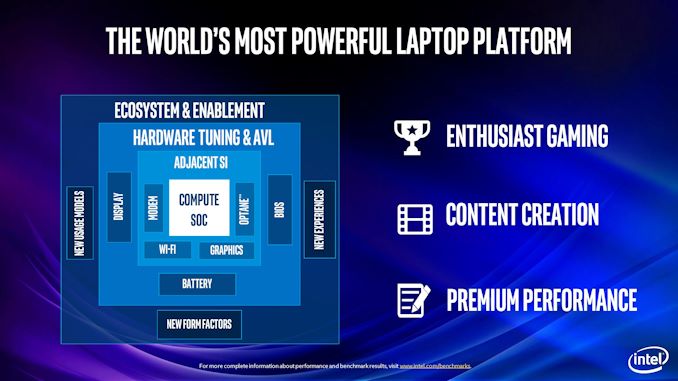
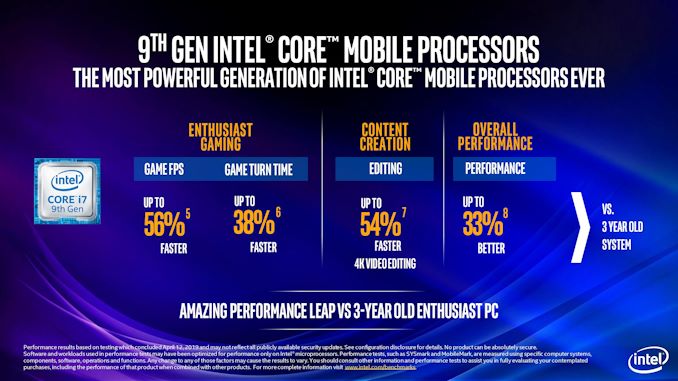

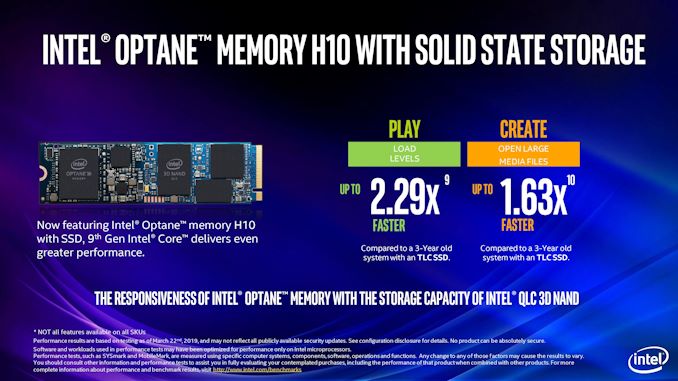

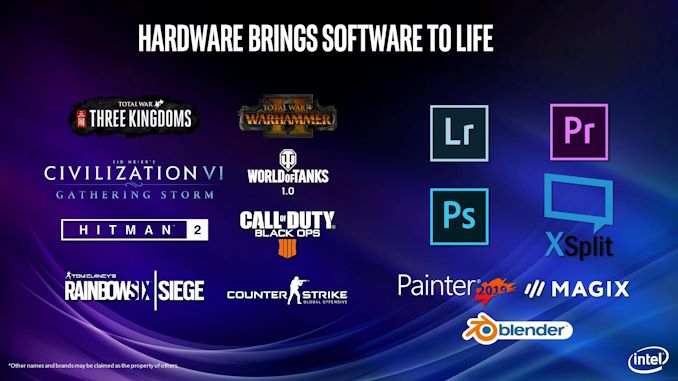
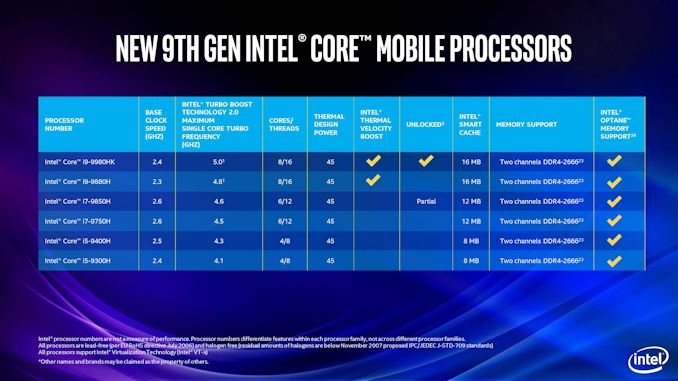
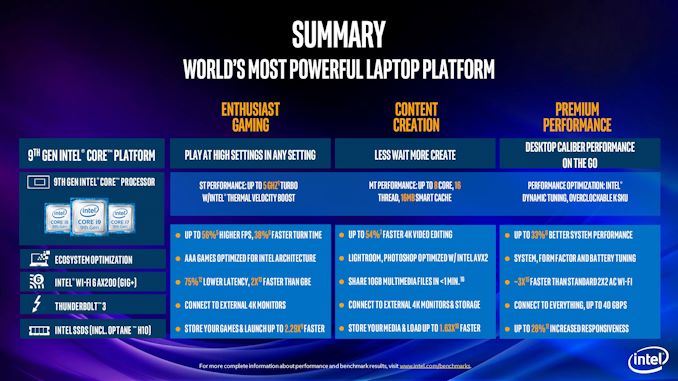
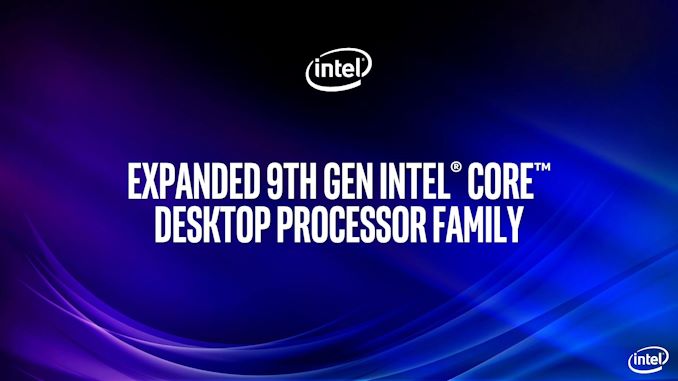

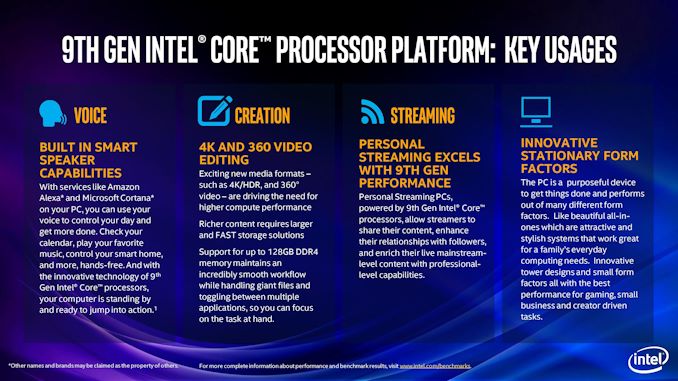
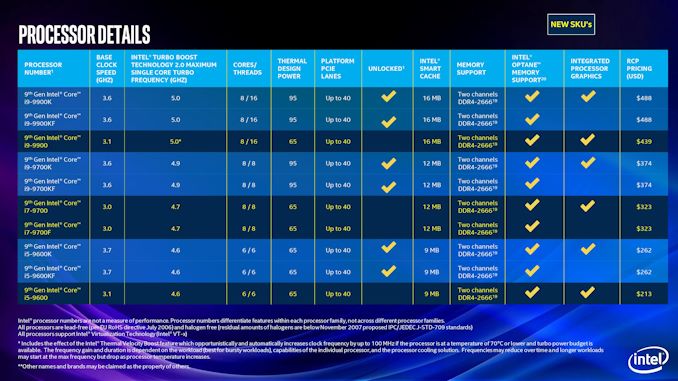
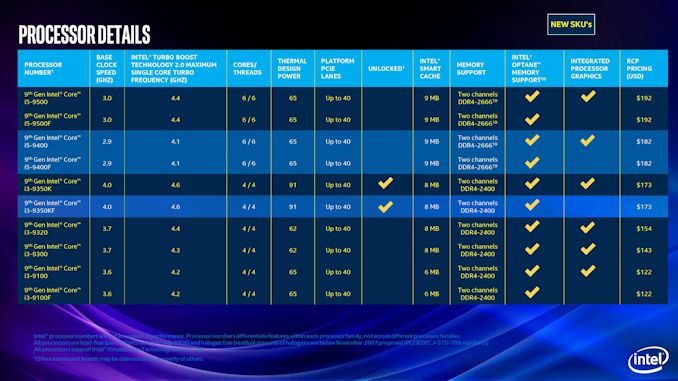
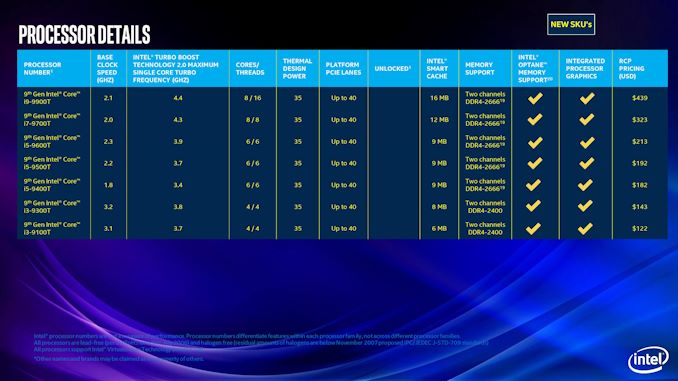
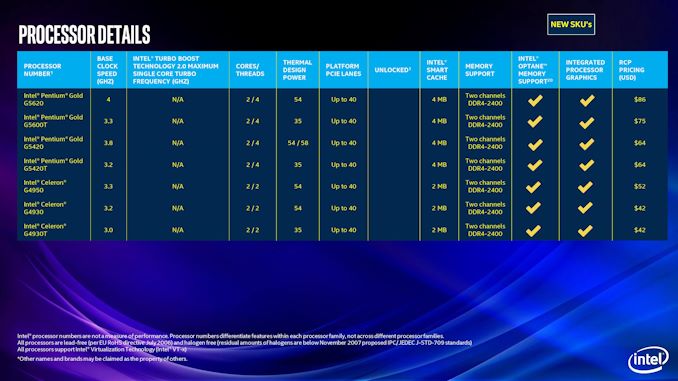
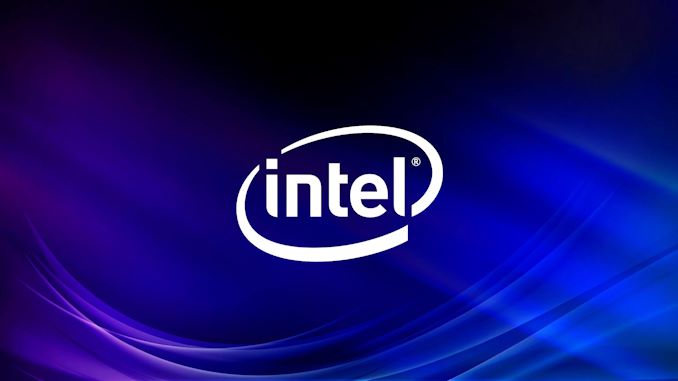
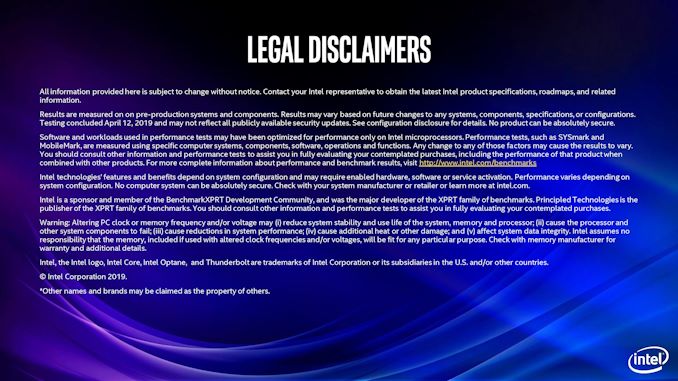
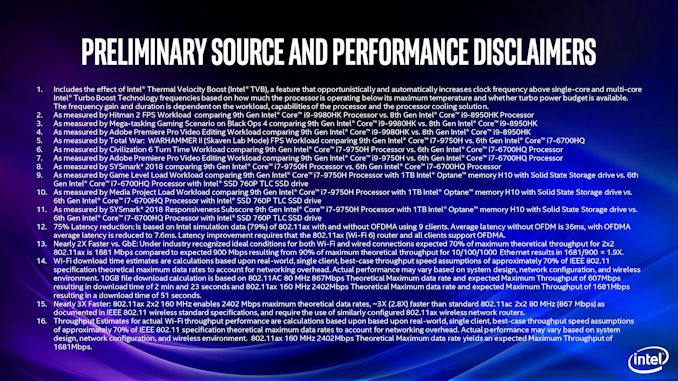



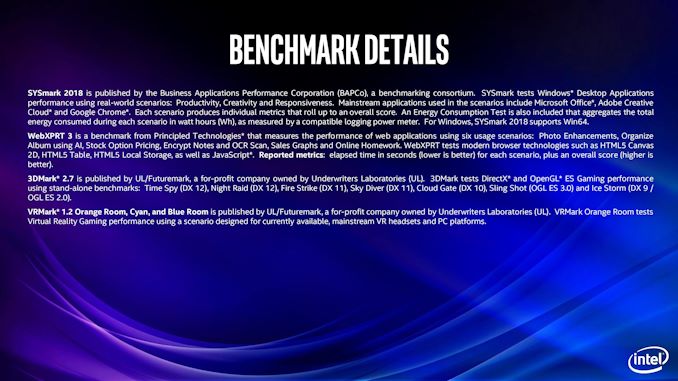
0 Response to "Intel 9th Gen Core Processors All the Desktop and Mobile 45W CPUs Announced AnandTech"
Post a Comment